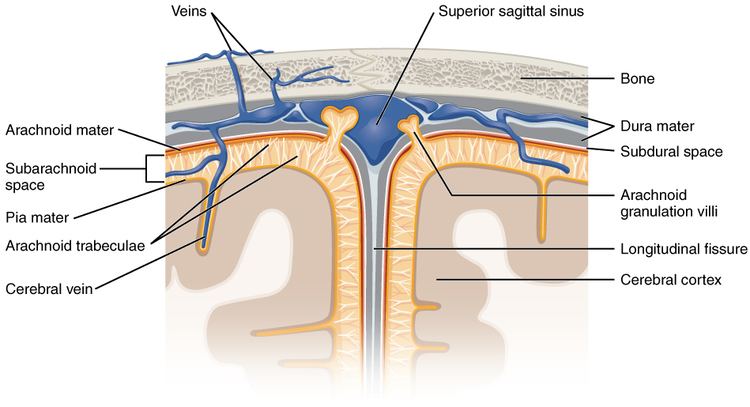MeSH A08.186.566.166.686 TA A14.1.01.202 | Dorlands
/Elsevier 12746651 FMA 83716 | |
 | ||
Latin Spatium subarachnoideum,
cavum subarachnoideale | ||
In the central nervous system, the subarachnoid space (subarachnoid cavity) is the anatomic space between the arachnoid mater and the pia mater.
Contents
It is occupied by spongy tissue consisting of trabeculae (delicate connective tissue filaments that extend from the arachnoid mater and blend into the pia mater) and intercommunicating channels in which the cerebrospinal fluid is contained.
Structure
This space is small on the surface of the hemispheres of the brain. On the summit of each gyrus the pia mater and the arachnoid are in close contact, but in the sulci between the gyri, triangular spaces are left, in which the subarachnoid trabecular tissue is found. Whilst the pia mater closely follows the surface of the brain and dips into the sulci, the arachnoid bridges across them from gyrus to gyrus.
At certain parts of the base of the brain, the arachnoid is separated from the pia mater by wide intervals, known as cisterns which communicate freely with each other; in these subarachnoid cisterns the subarachnoid tissue is less abundant. The subarachnoid space is the location of the interface between the vascular tissue and the cerebrospinal fluid and is active in the blood brain barrier.
Function
The arachnoid mater continues down the spinal cord too, and the subarachnoid layer with it. It serves a similar function in the spinal cord as it does in the brain.
